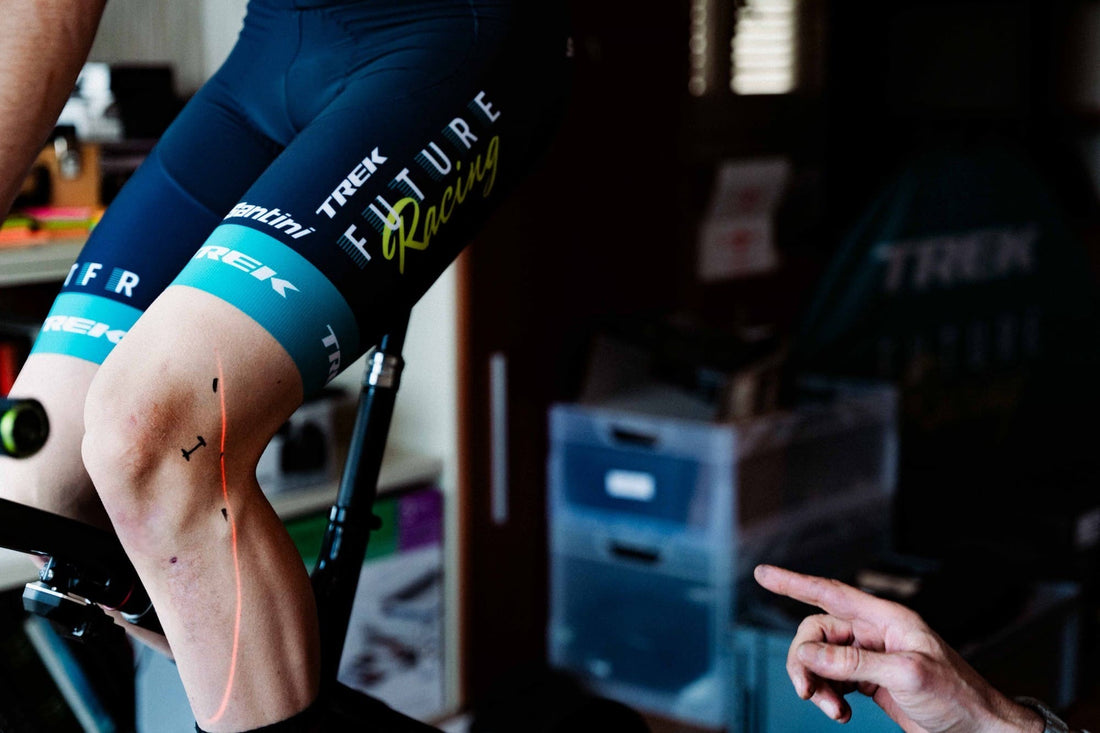
How to manage patellofemoral pain syndrome from cycling
Cycling is a fantastic way to stay fit, explore the outdoors, and enjoy a low-impact workout. But if you’ve ever felt a nagging pain in the front of your knee while pedaling, you might be dealing with something called patellofemoral pain syndrome, or PFPS. Don’t worry—this isn’t a doctor’s lecture! In this article, we’ll break down what PFPS is, why it happens to cyclists, and how you can manage it to keep enjoying your rides pain-free.
What Is patellofemoral pain syndrome in cyclists?
Patellofemoral pain syndrome is a fancy term for pain around or under your kneecap (the patella) where it meets your thigh bone (the femur). For cyclists, this pain can feel like an annoying ache or sharp discomfort in the front of your knee, especially when you’re pedaling hard or climbing hills.
Common symptoms: Front knee pain while pedaling
So, how do you know if you’re dealing with PFPS? Here are the main signs:
- A dull or sharp pain in the front of your knee, around or under the kneecap.
- Discomfort that gets worse when you pedal for long periods, climb hills, or ride at a high intensity.
- A feeling of stiffness or grinding in your knee after a ride.
- Pain that might show up when you’re walking up stairs or sitting for a long time.
If this sounds familiar, PFPS could be the culprit. The good news? There are ways to manage it and keep cycling!
Why It affects cyclists more than other athletes
Cyclists are especially prone to PFPS because of the repetitive motion of pedaling. Every time you push down on the pedals, your kneecap slides along a groove in your thigh bone. If something’s off—like your bike setup or leg strength—this movement can irritate the joint, causing pain. Unlike running or other sports, cycling involves thousands of pedal strokes in a single ride, which can put extra stress on your knees if things aren’t aligned properly.

Main Causes of patellofemoral pain when cycling
Let’s dive into why your knees might be complaining during your rides. Here are the top reasons cyclists develop PFPS:
Poor saddle height or position
If your saddle is too high, too low, or positioned too far forward or back, it can mess with how your knee tracks during pedaling. A bad saddle setup forces your knee to work harder than it should, leading to irritation and pain.
Overuse and repetitive motion of the knee joint
Cycling is all about repetition—your knees are constantly bending and straightening. If you’re logging long rides or pushing too hard without enough rest, the constant motion can wear down the cartilage under your kneecap, causing inflammation and discomfort.
Muscle imbalances or weak quadriceps
Your quads (the big muscles on the front of your thighs) help stabilize your kneecap. If they’re weak or imbalanced—or if other muscles like your glutes or hamstrings aren’t pulling their weight—your knee can take a beating. Weak quads, in particular, can let your kneecap shift out of place, leading to pain.
Quick Fixes to relieve knee pain mid-ride
Caught mid-ride with knee pain? Don’t panic! Here are some quick tweaks to ease the discomfort so you can keep rolling:
Adjust saddle height or fore-aft position
A small saddle adjustment can make a big difference. If your saddle is too low, try raising it slightly (about 1-2 cm at a time). If it’s too far forward or back, slide it to a more neutral position. A good rule of thumb: when your pedal is at the bottom of the stroke, your knee should have a slight bend, not be fully straight or overly bent. Test it out and see if the pain eases.
Change your pedaling cadence or take short breaks
If you’re grinding away at a low cadence (pedaling slowly with a lot of resistance), try spinning faster with an easier gear. A higher cadence (around 80-100 RPM) reduces the strain on your knees. Also, take short breaks to stand up, stretch, or coast to give your knees a rest.
Apply ice after riding to reduce inflammation
Once you’re off the bike, grab an ice pack (or even a bag of frozen peas!) and place it on your knee for 15-20 minutes. This can help calm any swelling or inflammation from your ride. Just make sure to wrap the ice in a cloth to protect your skin.
Long-Term solutions to prevent patellofemoral pain
Want to keep PFPS from coming back? These long-term strategies will help you ride pain-free for the long haul:
Use cycling insoles for better knee alignment
Your feet play a big role in how your knees move. If your arches collapse or your feet roll inward while pedaling, it can throw off your knee alignment. Cycling insoles can support your feet and keep your knees tracking properly.

Strengthen glutes and core for improved stability
Strong glutes and a solid core help take pressure off your knees by stabilizing your whole body while you pedal. Try adding exercises like squats, lunges, planks, and bridges to your routine a few times a week. Even 10-15 minutes of strength training can make a difference over time.
Work with a bike fitting expert for optimal setup
A professional bike fit is like a custom tailor for your ride. A bike fitting expert will adjust your saddle, handlebars, and pedals to match your body’s unique shape and riding style. This can prevent knee pain by ensuring everything is aligned perfectly. Many bike shops offer fitting services, and it’s worth the investment for pain-free cycling.
Final Thoughts
Patellofemoral pain syndrome doesn’t have to sideline your cycling adventures. By understanding what causes it, making small adjustments during your rides, and taking steps to strengthen your body and optimize your bike setup, you can keep the pedals turning without knee pain. If the pain persists or gets worse, consider checking in with a physical therapist or doctor for extra guidance. For now, tweak that saddle, spin a little lighter, and keep enjoying the ride!
If you have some questions, please feel free to contact us at info@solestar.com

